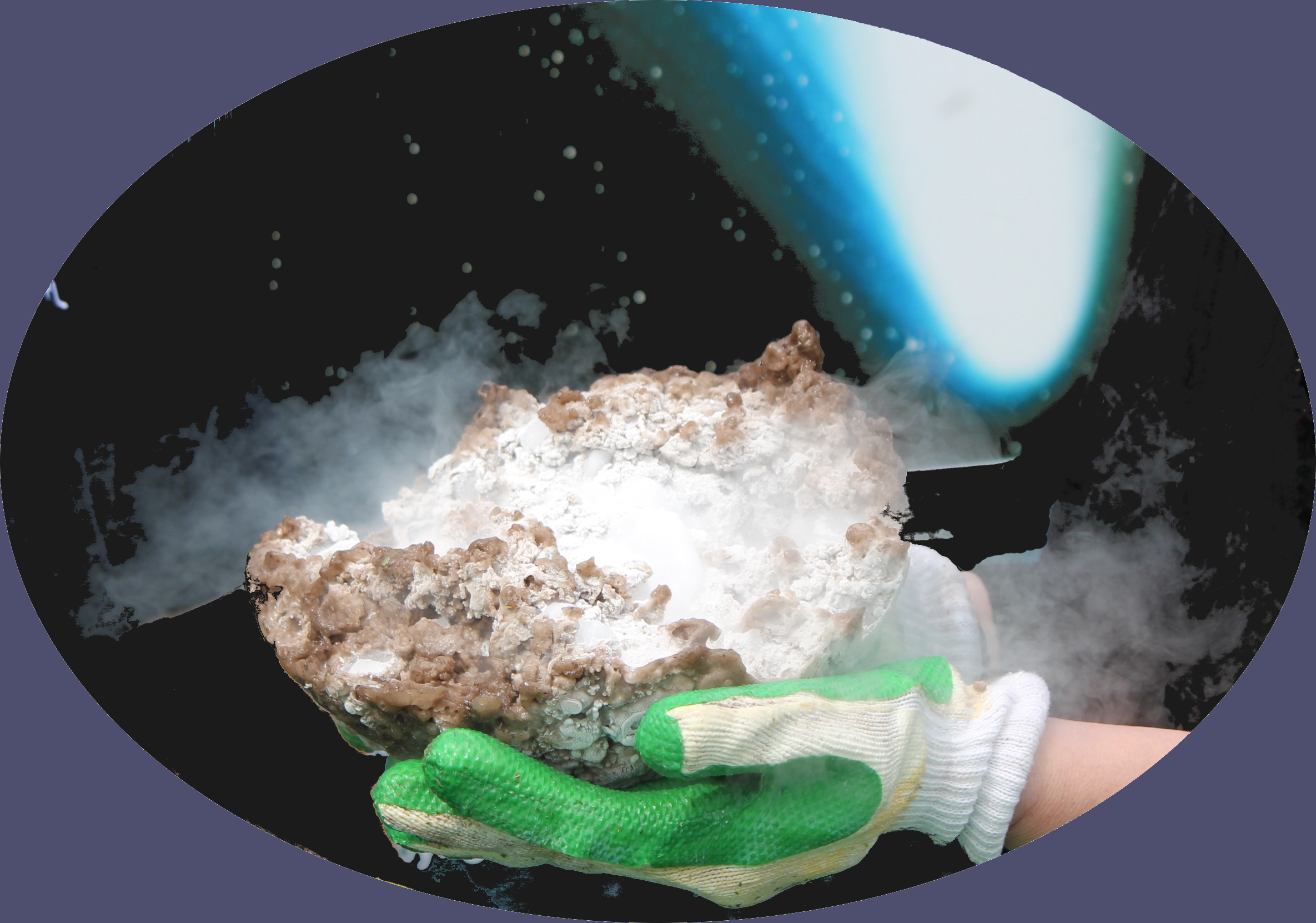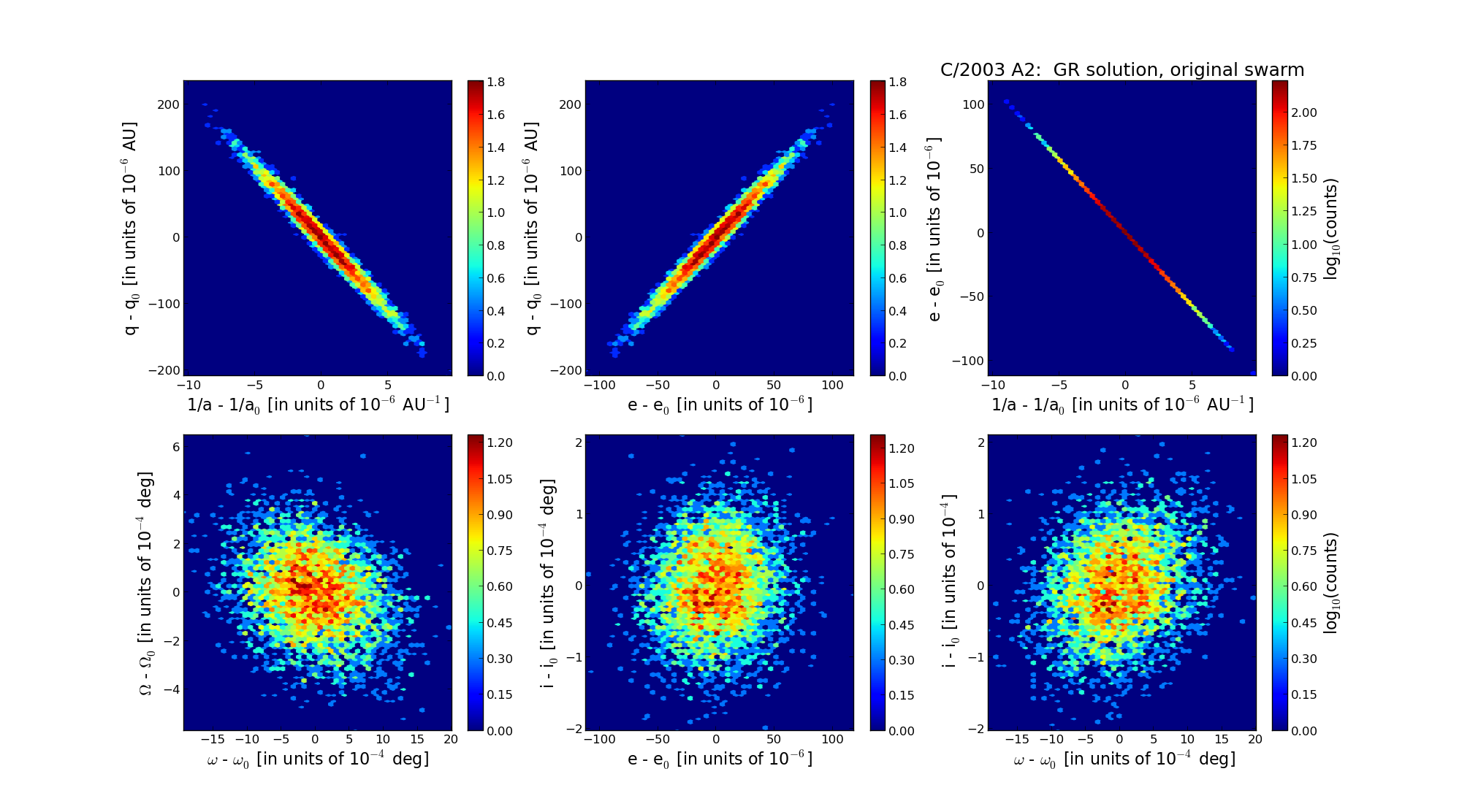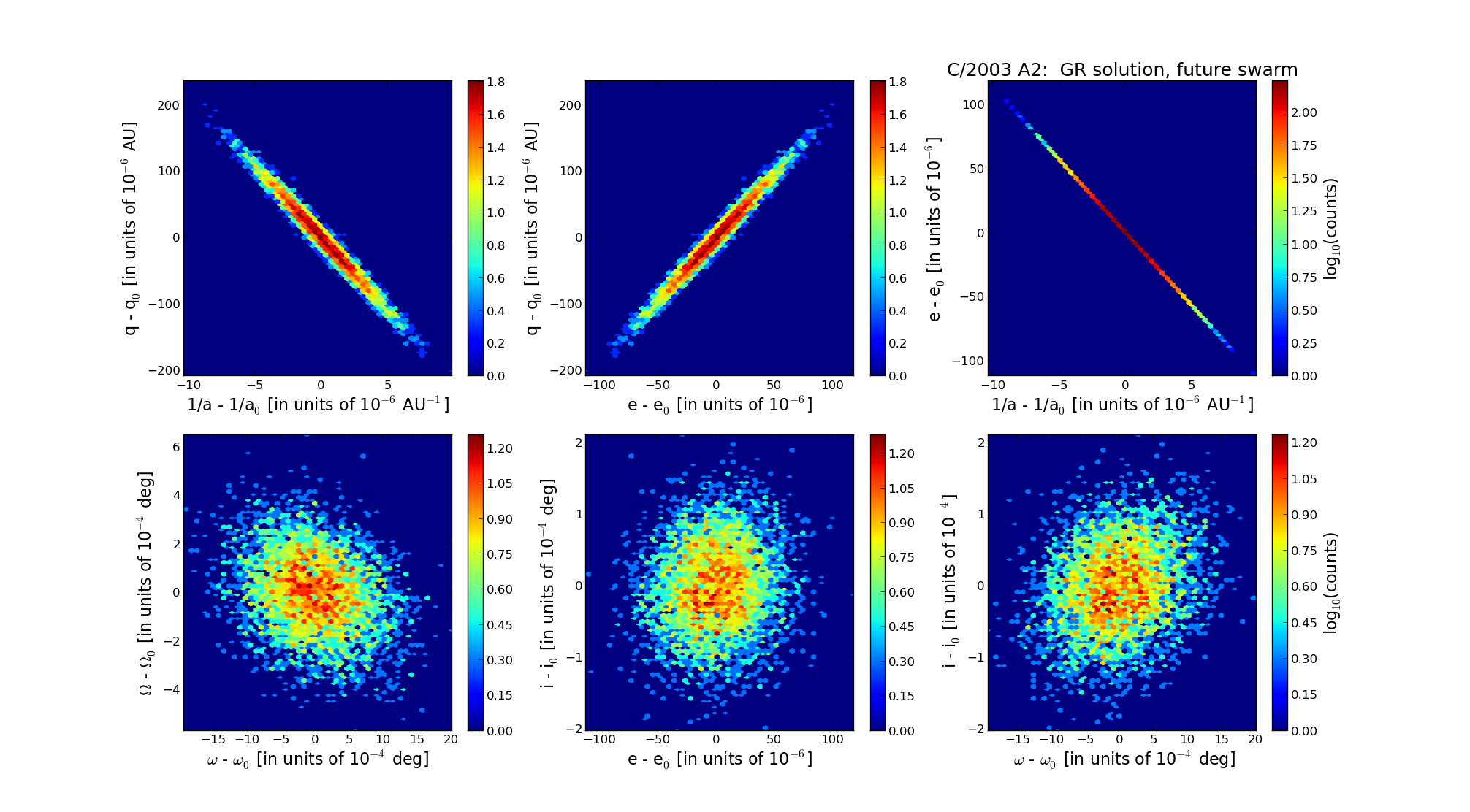| Solar System Dynamics & Planetology Group |
 |
C/2003 A2 Gleason |  |
| Solar System Dynamics & Planetology Group |
 |
C/2003 A2 Gleason |  |
| number of observations | 149 |
| number of residuals | 297 |
| data interval | 2002 Jan. 8 — 2005 Mar. 31 |
| rms [arcsec] | 0.53 |
| orbit quality class | 1a |
| Epoch (TT) | 20031117.0 | = JD 2452960.5 |
| time of perihelion passage (TT) | 20031105.810629 | ± 0.014951 |
| perihelion distance | 11.42703480 | ± 0.00005608 |
| eccentricity | 1.00693241 | ± 0.00002946 |
| argument of perihelion [deg] | 346.667136 | ± 0.000552 |
| longitude of the ascending node [deg] | 154.544251 | ± 0.000153 |
| inclination [deg] | 8.061448 | ± 0.000057 |
| inverse semimajor axis [10-6 au-1] | -606.67 | ± 2.56 |

| Epoch (TT) | 16870517 | |
| time of perihelion passage (TT) | 20031104.712566 | ± 0.015088 |
| perihelion distance | 11.42269558 | ± 0.00005556 |
| eccentricity | 0.99952706 | ± 0.00002901 |
| argument of perihelion [deg] | 346.598477 | ± 0.000555 |
| longitude of the ascending node [deg] | 154.566845 | ± 0.000154 |
| inclination [deg] | 8.065737 | ± 0.000058 |
| inverse semimajor axis [10-6 au-1] | 41.40 | ± 2.54 |

| Epoch (TT) | 23210623 | |
| time of perihelion passage (TT) | 20031104.299050 | ± 0.015052 |
| perihelion distance | 11.42176039 | ± 0.00005561 |
| eccentricity | 0.99846734 | ± 0.00002902 |
| argument of perihelion [deg] | 346.664908 | ± 0.000555 |
| longitude of the ascending node [deg] | 154.525849 | ± 0.000154 |
| inclination [deg] | 8.068556 | ± 0.000058 |
| inverse semimajor axis [10-6 au-1] | 134.19 | ± 2.54 |